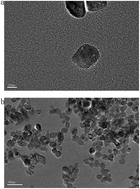Adverse effect of nano-TiO2 on the marine macroalgae Gracilaria lemaneiformis (Gracilariales, Rhodophyta): growth and antioxidant activity
Abstract
Macroalgae, the major contributor of primary productivity in coastal seas, contribute to the material cycle and energy flow in marine ecosystems. The purpose of this work was to evaluate the toxic effect of nano-TiO2 on the growth and antioxidant activity of Gracilaria lemaneiformis. An obvious inhibition of growth was observed in this study. The algae exposed to nano-TiO2 showed a negative growth rate at 20 mg L−1 and 40 mg L−1 during the 15 days exposure. The concentration of soluble protein increased slightly during the first 3 days of exposure, but it gradually diminished thereafter due to the high concentrations of nano-TiO2 and to prolonged exposure. Nano-TiO2 caused oxidative damage in G. lemaneiformis; superoxide anions accumulated, and nitrate reductase activity decreased linearly with the increase in nano-TiO2. Furthermore, extracts of G. lemaneiformis can scavenge DPPH· and hydroxyl radicals for their antioxidant capacity. However, the capacity to scavenge DPPH· and hydroxyl radicals in vitro decreased slightly with the increase in nano-TiO2. The results from this work imply that macroalgae can be an effective biomarker of nano-TiO2 contamination and can be useful indicators to evaluate the oxidative damage of increasing pollutants in marine ecosystems.



 Please wait while we load your content...
Please wait while we load your content...